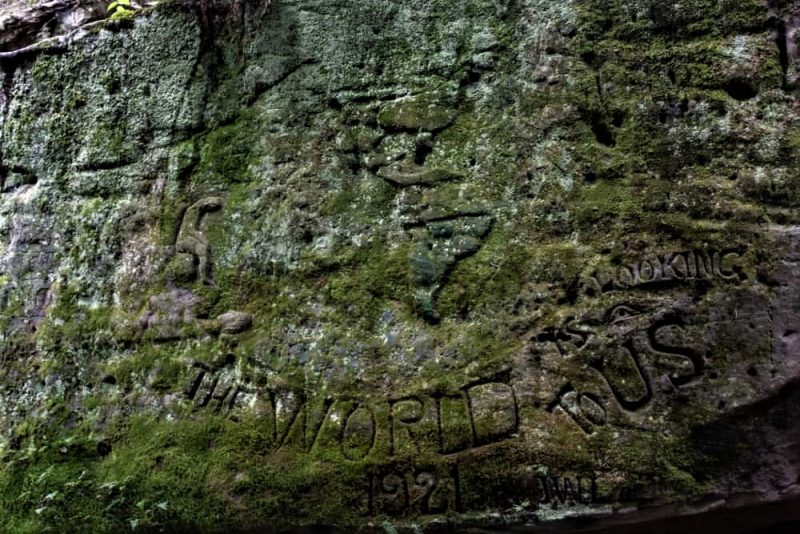Bilger’s Rocks, located in Bloom Township, is a geological phenomena that dates back 300 million years. The rocks were forced upwards from deep within the earth, eons ago, as the singular continent broke apart.
The rocks were part of the original Clearfield County land holdings of Jacob Bilger (1783-1863), an early German immigrant settler who purchased the site. They are today a local tourist site and a haven for hikers, rock climbers and picnickers.
The Bilger’s Rocks Association is rather recently formed volunteer group that oversees the rocks and the visitor’s facilities. Its careful attention and hard work have made Bilger’s Rocks a peaceful spot in which to enjoy Clearfield County’s natural surroundings.
First Nation peoples used the rocks as a shelter from the elements and a campsite. Some of their stone artifacts have been found there.
Bilger’s Rocks has been the site of more than century-old carved initials, but no carving there can match John Larson’s (1870-1960) carving of a map of the Western Hemisphere, which is captioned with the words, “The World is Looking to Us.”
A reverently-bowed human figure sits to the left side of the carving. Larson carved the year “1921” into the bottom of his work, a century ago.
Larson, known as JWL by those who remember him, was an immigrant from Sweden who arrived in the United States in 1890. He found work as a coal miner in the now extinct village of Peale, in Cooper Township. He later relocated to Grampian where he owned and operated the Belfast Coal Company.
JWL was a self-taught sculptor, musician and carpenter. He had a shy and inward personality, but he expressed himself well through the workings of his creative talents.
What message, to future generations, was JWL intending to convey with his carving and caption? A century later, much of the world still looks, sometimes for the worse, but more often for the better, to “us”, the United States.
2020 and 2021 have been tough years for the nation. So were 1920 and 1921. Those years saw the aftereffects of a deadly pandemic, terrible race riots, the rise of the KKK and white supremacy groups, the grieving aftermath of war and a fledgling economy rife with unemployment, inflation and labor strife. Should Americans have a sense of déjà vu when they look back a century?
John Larson didn’t have a crystal ball to foretell the future, but his map and caption carved into the rocks in Bloom Township, causes one to wonder. Readers can offer their own interpretations.
